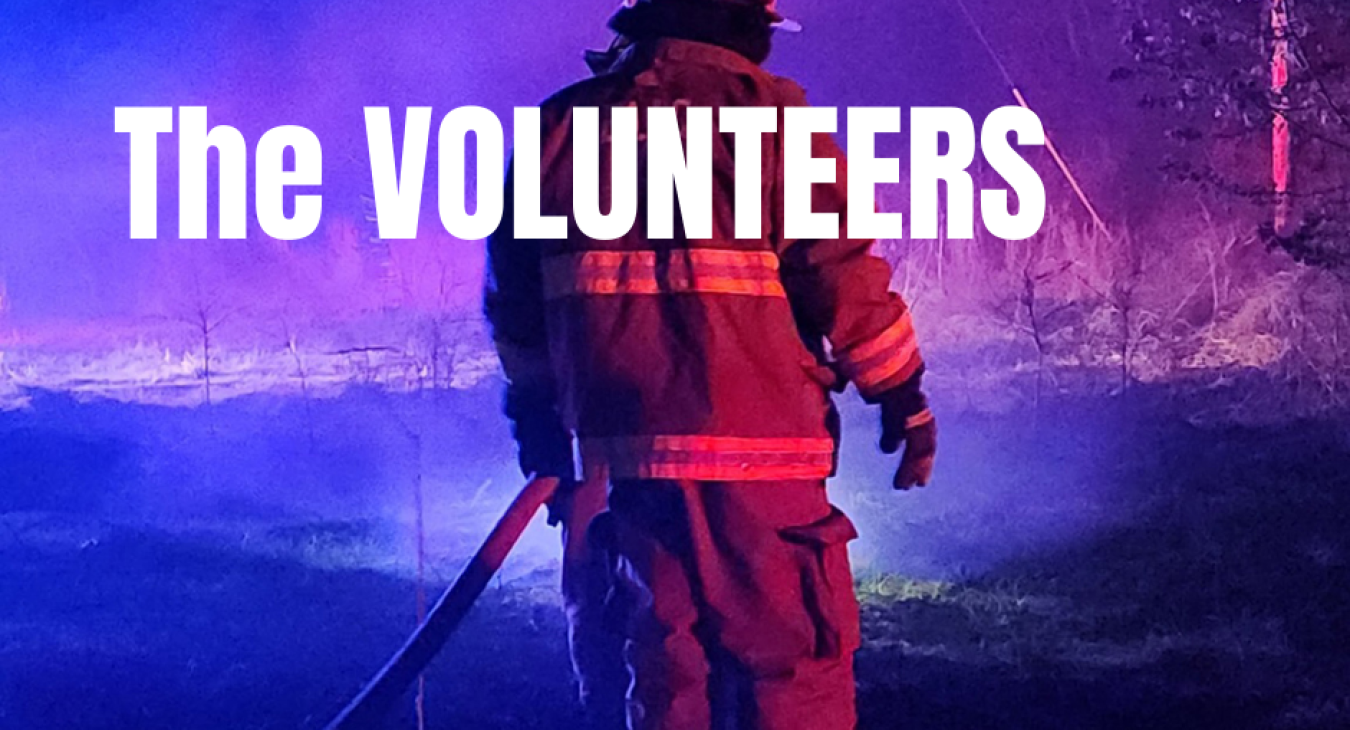It’s 4:30 in the morning when Will Duvall is woken by an emergency page on his phone. The McIntosh County dispatcher has sent the call out to all Hitchita volunteer firefighters to respond to a house fire on county line road.
“By the time we get the page, three or four minutes has already gone by from the initial call,” Duvall said. Volunteers quickly get up, drive to the station, grab their gear, and load up trucks to drive to the scene.
“We’re there 25 minutes after the initial call, and by that time, you’re trying to keep it from spreading,” Duvall said. “The first thing we do is make sure everybody is out.”
Luckily, the homeowners in this mid-February fire had even been able to rescue some of their belongings. The seven men and four trucks did their best to battle the blaze and save what they could of the property.
“I didn’t get to work until 10 o’clock that morning,” said Duvall, the fleet management supervisor at East Central Electric Cooperative.
After working the rest of the day, Duvall went back to the station to clean the hose, fuel up the trucks, and make sure everything was set for when they get called out again.
CHALLENGES
The first part of 2025 was a remarkable fire season in Oklahoma. Wildfires burned over 170,000 acres, destroying homes and injuring lives.
“This has been a crazy year,” Duvall said. “Last year our total call count for fires and medicals was 46. As of March, we’re at 31 calls this year, so we’re trending high.”
There is not a single paid fire fighting force in McIntosh County, and the volunteer departments are spread out, separated by the branches of Lake Eufaula.
“Being rural, we’re it. If your house catches fire, there is nobody else coming but volunteers,” Duvall said.
This is also true in the Pierce and Fountainhead areas, where the Fountainhead Area Improvement Council Volunteer Fire Department (F.A.I.C.) is the first line of defense for house fires, medical emergencies, and vehicle accidents on I-40.
Despite the crucial role they play in the safety of our communities, volunteer fire departments get minimal funding from county governments, and only collect a portion of the funding they need in membership dues. If they can get a grant from the Oklahoma Forestry Services, their annual budgets are less than $50,000.
The funds they bring in are quickly spent on vehicle and facility maintenance. There are costs to maintain yearly certifications, to perform routine hose and ladder testing, and the gear they wear only has a 10-year lifespan, assuming it isn’t exposed to hazardous chemicals.
“We’re very limited, especially in McIntosh County,” Duvall said. “It’s a very poor county.”
CO-OP SUPPORT
To make ends meet, volunteer departments are on the lookout for grant opportunities, which is where the co-op’s Operation Round Up program shines.
“The Operation Round Up grant has a significant impact on our ability to outfit our crew with life-saving equipment,” said F.A.I.C. Fire Chief Shawn Moore.
Some of the items F.A.I.C. has been able to purchase with grant funds include lights, hard hats, two full sets of wildland gear, and a thermal imaging camera.
The wildland gear is designed with lighter materials and rated for lower temperature fires. It is less cumbersome than structural gear, making it ideal for vehicle extractions—a common concern along I-40.
The thermal imaging camera allows firefighters to see objects, people, and hot spots in the smokey conditions of a house fire.
“We got the camera a week before, and it actually saved one of our firefighters,” Moore said.
Through the Operation Round Up program, East Central Electric Cooperative members have donated over $133,000 to provide equipment and training for local firefighters over the last 5 years.
CEO Dwayne Elam said, “The safety of the members and communities we serve is our highest priority, and we are proud to support the men and women who keep our communities safe.”
CALL TO ACTION
Volunteer fire departments are not just hurting for funds, they are hurting for people.
F.A.I.C. maintains two stations with room for up to 50 volunteers. They have 15 on the roster. On any given call, maybe six show up.
“We’re pretty lucky at Hitchita,” Duvall said. “We’ve got a core group of about 7 and then our chief is awesome. He’s down there almost every day doing something.”
“To be a volunteer, people think you have to have all this training and knowledge,” Duvall said. “I walked in with zero. Never done it before. Anybody can be a volunteer.”
Duvall noted that there are plenty of ways to contribute beyond emergency response. Volunteers can assist with truck maintenance, keep equipment clean or handle paperwork. Because the station also serves as a polling place during elections, extra hands are needed to prepare the space and ensure everything is in order.
Oklahoma’s volunteer fire departments are the backbone of rural communities, answering calls in the middle of the night, battling blazes with limited resources and saving lives with sheer dedication. These firefighters give their time and energy to protect their neighbors—now, more than ever, they need their neighbors to stand with them.


